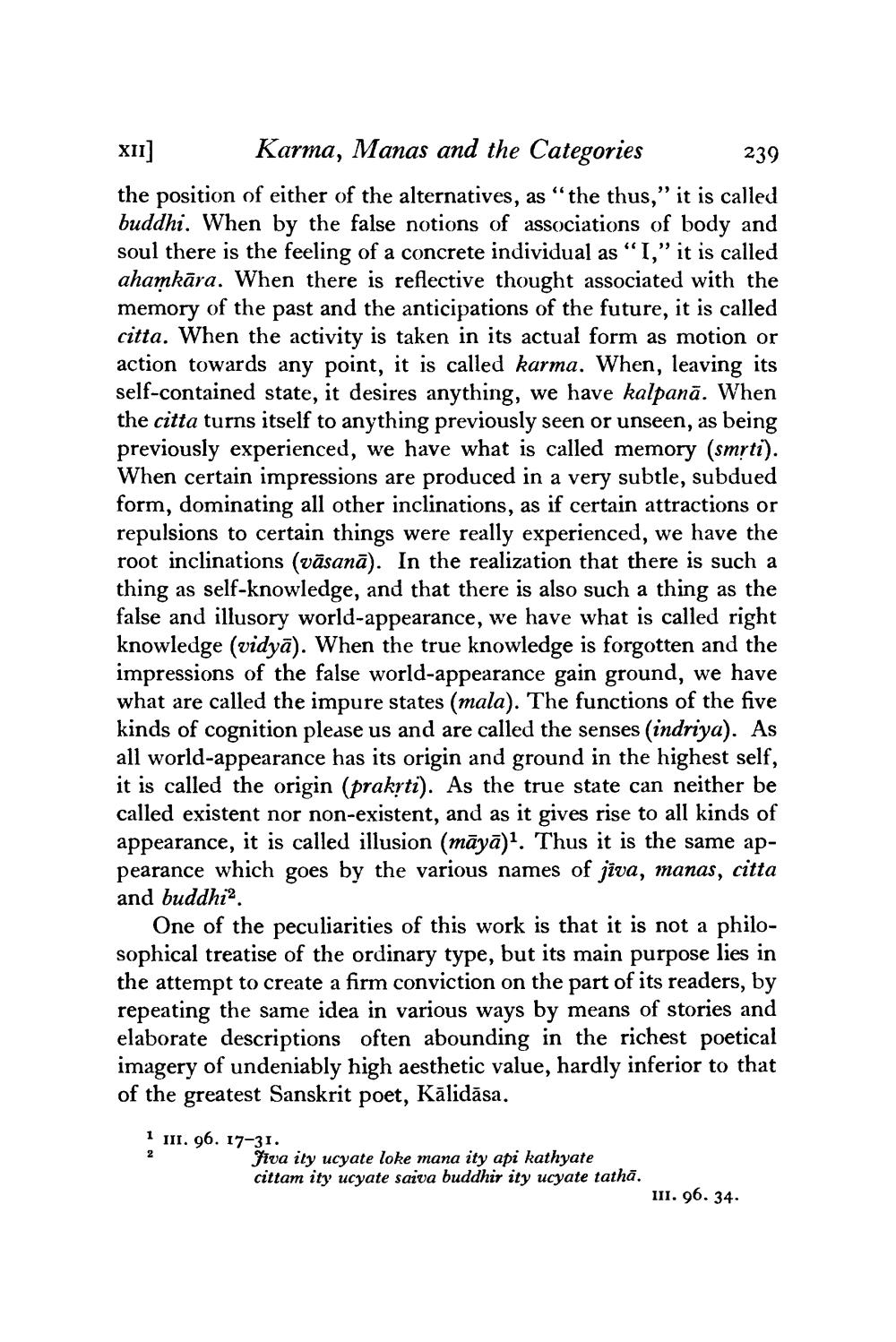________________
x11] Karma, Manas and the Categories 239 the position of either of the alternatives, as “the thus," it is called buddhi. When by the false notions of associations of body and soul there is the feeling of a concrete individual as “T," it is called ahamkāra. When there is reflective thought associated with the memory of the past and the anticipations of the future, it is called citta. When the activity is taken in its actual form as motion or action towards any point, it is called karma. When, leaving its self-contained state, it desires anything, we have kalpanā. When the citta turns itself to anything previously seen or unseen, as being previously experienced, we have what is called memory (smrti). When certain impressions are produced in a very subtle, subdued form, dominating all other inclinations, as if certain attractions or repulsions to certain things were really experienced, we have the root inclinations (vāsanā). In the realization that there is such a thing as self-knowledge, and that there is also such a thing as the false and illusory world-appearance, we have what is called right knowledge (vidyā). When the true knowledge is forgotten and the impressions of the false world-appearance gain ground, we have what are called the impure states (mala). The functions of the five kinds of cognition please us and are called the senses (indriya). As all world-appearance has its origin and ground in the highest self, it is called the origin (prakyti). As the true state can neither be called existent nor non-existent, and as it gives rise to all kinds of appearance, it is called illusion (māyā)?. Thus it is the same appearance which goes by the various names of jiva, manas, citta and buddhi.
One of the peculiarities of this work is that it is not a philosophical treatise of the ordinary type, but its main purpose lies in the attempt to create a firm conviction on the part of its readers, by repeating the same idea in various ways by means of stories and elaborate descriptions often abounding in the richest poetical imagery of undeniably high aesthetic value, hardly inferior to that of the greatest Sanskrit poet, Kālidāsa.
1 11. 96. 17-31.
Jiva ity ucyate loke mana ity api kathyate cittam ity ucyate saiva buddhir ity ucyate tathā.
III. 96. 34.




